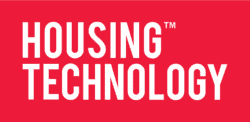The role of sensors in transforming indoor air quality
Indoor air quality (IAQ) is no longer a topic confined to academic research or niche discussions among engineers. It’s rapidly becoming a mainstream concern for housing providers and tenants alike. Increasingly, the conversation is being driven by the proliferation of affordable, reliable sensors and data-driven solutions. But how does sensor technology improve outcomes? And why is it now seen as best practice across the sector?
The power of measurement – why IAQ matters
The age-old adage of ‘you can’t manage what you don’t measure’ rings true when it comes to IAQ. For decades, addressing problems such as damp, mould, radon and other pollutants has relied on reactive strategies – fixing problems once they became visible or caused harm. Today, affordable sensor technologies offer a proactive alternative; continuous monitoring that can detect problems before they escalate.
Consider mould, a recurring challenge in the UK’s housing stock. As discussed with experts on my ‘Air Quality Matters’ podcast, mould only becomes harmful when conditions such as humidity and temperature reach certain thresholds. Sensors can alert housing providers or tenants to subtle shifts in these variables, enabling timely interventions. This approach is vastly more efficient than waiting for visual signs of damage.
Historically, IAQ monitoring relied on spot checks but these often missed critical fluctuations in pollutant levels. Today, affordable sensors provide continuous monitoring, capturing a more accurate and dynamic picture of indoor environments. This data enables housing professionals to make informed decisions, reducing both operational costs and risks to occupants’ health.
A practical tool
As Stanton Wong, a pioneer in sensor standardisation, shared during a podcast episode, the evolution of low-cost sensors has brought reliable air quality monitoring to the mainstream. Wong said, “It’s no longer the domain of academia, but a practical tool for building managers and housing providers to ensure healthier living spaces.”
Real-time data isn’t just about identifying problems, it’s also about improving outcomes. For example, excessive levels of carbon dioxide in housing indicate poor ventilation, compromising comfort, energy efficiency and, most critically, health.
Using integrated systems such as Aico’s HomeLink platform, housing providers can visualise data trends across entire portfolios. These insights enable maintenance teams to prioritise high-risk properties while also ensuring compliance with evolving standards around IAQ. It’s a win-win; better living conditions for tenants and more streamlined operations for housing providers.
A holistic approach to IAQ
While carbon dioxide, temperature and humidity are essential metrics, the future of IAQ monitoring will include a broader range of pollutants, from radon to particulates such as PM2.5. Radon, for instance, remains a silent but deadly presence in certain regions; emerging sensor technologies are making it feasible to include radon monitoring as part of routine IAQ assessments.
Looking ahead, the integration of IAQ sensors into smart-home ecosystems will drive the next wave of innovation. Imagine a home where sensors not only monitor IAQ but also trigger automated responses, such as adjusting ventilation rates, alerting occupants or even ordering replacement filters for systems.
Predictive analytics
But the real game-changer will be predictive analytics. By leveraging historical data and machine learning, IAQ systems will soon anticipate problems before they arise. This shift from reactive to predictive management can transform housing standards, making healthier homes the norm rather than the exception.
For housing providers, embracing IAQ monitoring isn’t just about compliance or reputation, it’s about delivering tangible value to their tenants. At its core, this technology is a tool for empowerment. It equips us to address pressing health challenges, reduce energy consumption and create homes where people can thrive.
As an example, organisations such as Aico are leading the charge, demonstrating how the thoughtful integration of sensors and data platforms can drive meaningful change. The message is clear; you can’t manage what you don’t measure, and with today’s technologies, there’s no excuse not to measure.
IAQ monitoring will continue to evolve, incorporating new pollutants, improving accuracy and integrating seamlessly with other building systems. The question is not whether we can afford to adopt this technology, but whether we can afford not to.
Simon Jones is the founder of Air Quality Matters.

